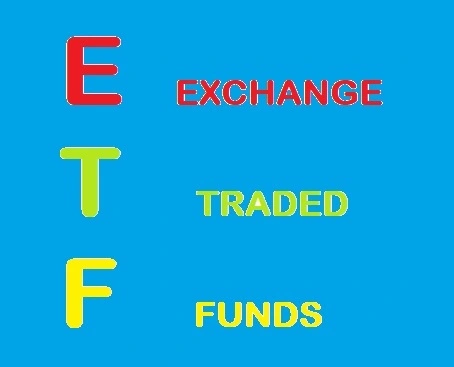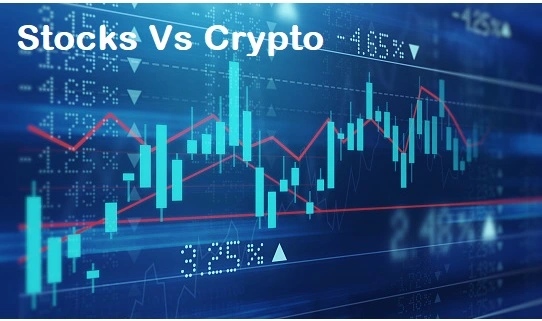Table of Contents
An ETF, or Exchange Traded Fund, is a pool of equities or capital instruments that are traded on a stock exchange. we are sharing the top ETF on NSE to invest in this year.
If you have an equities trading account with your broker, you can buy ETFs. When you purchase an ETF, you are effectively purchasing access to the ETF’s component assets.

An Accredited Investment Manager (RIA) can choose from a variety of ETFs, including stocks, bonds, commodities, currencies, and index ETFs, among others.
Today in this article we are going to learn what are ETF, their types and how to buy ETFs, and the top ETFs in India currently.
Various kinds of ETFs in India ETF On NSE
There are mainly four types of ETFs we have mentioned below:
Equity ETFs: An equity Exchange Fund resembles the behaviour of an Equity Index. The index can be classified into various ETFs like Nifty 50, a broader index like Nifty Midcap 150, or a Sectoral index.
Commodity ETFs: A commodity ETF, for example, reviews the activities of gold. Birla Sun Life Gold ETF, SBI Gold ETF, Axis Gold ETF, and others are types of gold ETFs.
Debt ETFs: The progress of a debt security is tracked by the debt ETF. Nippon Bond ETF – April 2030, which reflects the level of the Nifty Nippon Bond Index, LIC MF G-Sec Long Term ETF, which displays the results of the Nifty 8-13 year G-Sec Index, DSP Liquidity ETF, which provides a summary of the Nifty 1D Rate Index, and so on are some instances of debt ETFs.
International ETFs: Global ETFs follows the progress of a foreign nation’s index. Most Shares include NASDAQ 100, which follows the Nasdaq 100 Benchmark, and Nippon India ETF Hang Seng BeES, which monitors the Hang Seng Index, which are two examples.
Procedure to buy ETFs
To invest in ETFs, you’ll need a Demat and trading account. A purchase order can be placed from your brokerage account.
The transaction amount will be taken from your trader’s account during the payment procedure, and the ETF shares will be deposited into your Demat account.
You must place an order to sell from your brokerage account to transfer ETF units. The ETF shares will be deducted from your Demat during the settlement system, and the transaction amount will be returned to your bank/trading account.
ETFs are issued by Asset Management Companies. You can buy ETFs when New Fund Offering (NFO ) is issued or purchase them from a Secondary Market.
New Fund Offering
The NFO date and time are announced by the AMC that is providing the ETF. Join the ETF by applying. The AMC will distribute ETF units after the NFO closes.
Secondary Market
The ETF units are traded on the stock markets like the BSE and NSE when the NFO ends and the allocation to investors is finished. ETF units are traded in the same way that stock shares are traded during trading sessions. You can purchase ETF units via your broker by using your trading account to place an order.
Merits of ETFs India ETF On NSE
Minimum Expenditure Ratio: When compared to typical mutual fund schemes, ETFs have a lower fee proportion. The charge ratio for most typical mutual fund schemes will be between 2 and 2.5 per cent. However, the expense ratio of an ETF is generally less than 1%.
Price discovery on a real-time basis: In the situation of other mutual fund schemes, the end-of-day net asset value (NAV) is adjusted to the shares you purchase.
In the case of ETFs, however, unit trading takes place in real-time throughout trading hours. You will understand the cost at which your purchase was completed as soon as it is done.
Heterogeneity: ETFs focused on larger benchmarks, such as the Nifty 50, provide access to a portfolio of 50 securities. The Nifty 50 companies cover more than 20 distinct areas of the economy. ETFs provide versatility, which is important for any investment.
Minimal Investment needed: The lowest number of units to buy or sell when purchasing or selling ETFs is one. As a result, the amount of funding for ETFs is quite low, making them accessible to consumers of all income levels.
No Prejudice: The fund manager of an actively managed fund determines which stocks to acquire, how much to purchase, when to purchase, at what rate to purchase, and so on. The money manager makes all of these decisions.
Fund manager decisions can be skewed and hurt the system’s profits. In the event of an ETF with a reference such as the Nifty 50, however, the fund manager must deposit the ETF funds in all of the Nifty 50 members according to their criteria weights.
This eliminates “fund management bias” because they have no say in which stocks to acquire, how much to buy when to purchase, at what price, and so on.
Demerits of ETFs
Demat account: You must have a Demat account to trade in ETFs, which is not the situation with the other equity funds. There are account creation and yearly maintenance fees associated with a Demat account. You’ll also have to pay brokerage to implement ETF buying and selling transactions.
Less liquidity: In the example of certain ETFs, transaction volumes are modest. Due to poor liquidity, you may have to pay a premium to NAV while purchasing ETF units. Likewise, due to insufficient liquidity, you may have to sell ETF units at a discount to NAV when selling them.
Absence of SIP mode of investment: Active mutual fund schemes are available for investments via systematic investment programs (SIPs). The SIP manner of payment is not accessible with ETFs, however. You must purchase ETF shares from the exchange by submitting a request from your trading account when you want to participate in them.
Points to remember while investing in ETFs
Expanse Ratio: While picking between two ETFs that track the same benchmarks, such as the Nasdaq 50, the ETF with the lesser expense ratio must be preferred. The rule of thumb is that the lesser the expense ratio, the better will be the result.
Tracking problem: The profits provided by an ETF may differ slightly from those provided by the benchmark. It occurs because the fund management may retain some cash reserves to cover day-to-day expenses.
The tracking variance is between the baseline and the ETF returns. While picking between two ETFs that follow the same standard, such as the Nifty 50, the ETF with the lesser tracking error should be preferred. The smaller the number, the better will be the results.
Asset under management: Select ETF with a greater AUM if possible. Larger plans may see less fluctuation. When selecting ETFs for investing, meanwhile, you should always prioritize expense ratio and tracking inaccuracy over AUM.
Top ETF on Nse Traded in India
- CPSE ETF
The Central Public Sector Enterprises Exchange Traded Fund (CPSE ETF) is an open-ended exchange-traded fund that started in March 2014. Though an ETF is a sort of mutual fund, you can normally manage (buy/sell) the shares using an investment portfolio on a share market.
The CPSE ETF invests in a focused basket of equities with a 20% weighting in the underlying index, the Nifty CPSE Index. Presently, the ETF holds stocks in 11 public firms in the oil and energy industries.
The CPSE ETFs AUM is Rs. 17,515 cr. Its expanse ratio is 0.05 and its 1-year return % is 60.44%.
- ICICI Prudential Bharat 22 ETF
Bharat 22 ETF is an open-ended exchange-traded fund that invests in the Bharat 22 Index of the S&P BSE. The fund invests in 22 companies, three of which are private and 19 of which are public (PSUs).
The government launched the Bharat 22 scheme to meet its disinvestment target in PSUs. Except for sectoral funds, the ETF program is the lowest ranking equity mutual fund across all categories. In the last year, the Bharat 22 ETF has lost approximately 15% of its value. The fund has lost 21 per cent so far this year.
The ICICI Prudential Bharat 22 ETF’s AUM is Rs. 8618.44 cr. Its expanse ratio is 0.05 and its 1-year return % is 41.73%.
- Nippon India BeES ETF
Nippon India Mutual Fund, originally Reliance Mutual Fund, is an asset management company (AMC) founded after Japan’s Nippon Life Insurance Company purchased a share in Reliance. The fund firm offers a variety of products to help investors achieve their various investing objectives.
Equities, debenture, Exchange – Traded fund (ETF), cash, retirement investments, and cash are among the firm’s schemes. Nippon India ETF Nifty BeES is one of the company’s 15 exchange-traded funds.
The Nippon India BeESETF’s AUM is Rs. 464.11 cr. Its expanse ratio is 0.49 and its 1-year return % is 33.29%.
- Kotak PSU Bank ETF
In December 1998, Kotak Mahindra Asset Management Co. Ltd. (KMAMC) began operations. It is the invention of Kotak Mahindra Bank Ltd and is one of India’s most respected AMCs (KMBL).
Approximately 7.5 lakh people have invested in the firm’s various initiatives. It has 84 local branches in 80 cities around the country that serve users’ financial products.
The Kotak PSU Bank ETF consists of share trading on the Bombay Stock Exchange (BSE) and the National Stock Exchange (NSE) (NSE). The selected money manager will invest largely in company shares, which will be included in the Nifty PSU Bank Indicator in the same proportion.
The stocks are bought and sold through a broker on the Bombay Stock Exchange (BSE) and/or the National Stock Exchange (NSE), just like any other equity securities. Investors who are authorized to invest in equities stocks may also invest in the Kotak PSU Bank ETF.
The Nippon India BeESETF’s AUM is Rs. 275.1 cr. Its expanse ratio is 0.49 and its 1-year return % is 33.09%.
- SBI ETF Sensex Next 50
The State bank of India is the largest in India. The scheme’s investment goal is to offer gains that, subject to tracking error, closely match the annual returns of the securities covered by the underlying index. However, there is no warranty or proof that the scheme’s commitment goal will be met.
The SBI ETF Sensex Next 50ETF’s AUM is Rs. 7.62 cr. Its expanse ratio is 0.12 and its 1-year return % is 29.50%.
- Motilal Oswal Midcap 100 ETF
The Motilal Oswal Midcap 100 ETF is a Motilal Oswal Mutual Fund ETFs – Index fund. It was founded on February 3, 2011, and has an AUM of 91.75crores. NIFTY 50 – TRI is the primary index, while Nifty Midcap 100 – TRI is the secondary index, for the Motilal Oswal Midcap 100 ETF.
Adani Total Gas Limited is one of the fund’s top three investments, and Swapnil P Mayekar is the manager of the Motilal Oswal Midcap 100 ETF.
The AUM of Motilal Oswal Midcap 100 ETF is Rs. 91.75cr. Its expanse ratio is 0.20 and its 1-year return % is 25.08%.
- IDBI Gold ETF
IDBI Gold Exchange Traded Fund is a gold ETF that is part of the IDBI Mutual Fund. It was founded on November 9, 2011, and has an AUM of 88.88 crores. The primary index for the IDBI Gold Exchange Traded Fund is Gold-India.
The NAV of the IDBI Gold Exchange Traded Fund rose 11.45 per cent.
The fund’s top three holdings include Gold – Mumbai, TREPS, and Net Receivable / Payable.
Khozem Jabalpurwala manages the IDBI Gold Exchange, Traded Fund.
The AUM IDBI Gold ETF is Rs. 88.88cr. Its expanse ratio is 0.35%.
- UTI Nifty ETF
The UTI- Nifty Next 50 Exchange Traded Fund is a UTI Mutual Fund ETFs – Index fund. It began operations on August 4, 2017, and now has an AUM of 634.52 crores. The NIFTY NEXT 50 ETF is tested against the primary index NIFTY NEXT 50 and the subsidiary index NIFTY NEXT 50.
The UTI Nifty ETF’s AUM is Rs. 634.52cr.
Conclusion
This is all we have about exchange-traded funds (ETFs). We have not only covered top 8 ETFs of India in 2022 but also we have given you total knowledge of ETFs in this article. After reading this article most of your doubts will be clear and you can confidently invest in ETFs.






